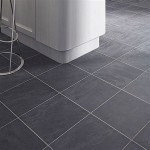Laminate Flooring Transitions: A Comprehensive Guide
Laminate flooring is a versatile and affordable flooring option that can enhance the look and value of any home. However, when it comes to transitioning between different floor types, such as laminate and carpet or tile, it is crucial to consider proper methods to create a seamless and aesthetically pleasing transition.
Types of Transitions
There are several types of transitions available for laminate flooring, each designed for different applications. Here are the most common ones:
- T-Moldings: These are used when transitioning between two floors of the same height. They create a smooth and discreet transition with a thin, metal strip.
- Reducer Strips: Similar to T-Moldings, reducer strips are used to transition between floors of different heights. However, they feature a sloped edge that helps to bridge the gap.
- Thresholds: Thresholds are thicker and wider than other transitions and are typically used in doorways or between rooms with different floor types.
- Stair Nosing: Specifically designed for stairs, stair nosing provides a safe and secure transition while covering the exposed edge of the laminate.
- End Caps: End caps are used to finish off the ends of laminate flooring, creating a visually appealing and consistent look.
Choosing the Right Transition
Selecting the appropriate transition for your laminate flooring depends on several factors:
- Floor Height: The height difference between the two floor types will determine the type of transition you need.
- Floor Type: The materials and textures of the adjacent flooring can influence the transition choice to ensure compatibility.
- Traffic: High-traffic areas may require more durable transitions to withstand wear and tear.
- Personal Preference: Ultimately, the style and appearance of the transition should complement the overall décor of your home.
Installation Tips
Proper installation of laminate flooring transitions is essential for a professional-looking and functional transition. Here are a few tips to ensure a successful installation:
- Measure and Cut: Measure the space where the transition will be installed and cut the transition to fit precisely.
- Use Adhesive: Apply a high-quality adhesive to the back of the transition and press it firmly into place.
- Nail or Screw: Depending on the transition type, you may need to use nails or screws to secure it permanently.
- Finish with Caulk: Once the transition is installed, apply a thin bead of caulk around the edges to fill any gaps and prevent moisture penetration.
By following these essential aspects of laminate flooring transition, you can create smooth, visually appealing, and durable transitions between different floor types, enhancing the overall beauty and functionality of your home.

Performance Accessories Parchment 0 75 In T X 2 37 W 78 7 L Laminate 4 1 Molding M4in1 05691 The Home Depot

Simplesolutions 4 In 1 Transition Laminate Flooring Best Honolulu

Laminate Flooring Transition Piece

Self Adhesive Pvc Flat Floor Transition Strip Laminate Door Divider 6 56ftx1 6inch Com

Guide To Flooring Transitions

When To Use Transition Strips On Your Floors Ina Flooring Services

Floor Transition Strip Self Adhesive Flat Laminate Cover 2 Wide

Self Adhesive Vinyl Floor Transition Strip Laminate Flat Divider For Joining Gaps Carpet Threshold Tiles Black Com

Installing Laminate Transitions Step By Instructions

How To Install Floating Laminate Wood Flooring Part 3 The Finishing Touches Installing Diy Floors Transition Strips








